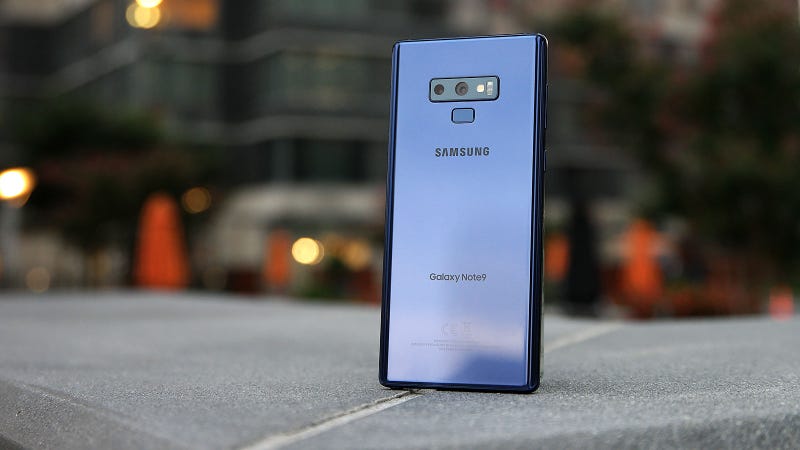 Photo: Sam Rutherford (Gizmodo)
Photo: Sam Rutherford (Gizmodo)
Recently, sentiment has been growing that smartphones aren’t as exciting as they used to be, and to a certain extent, that’s true. Smartphones have been getting faster, their cameras have gotten sharper, and their displays have gotten bigger, but at the same time, they are more or less the same rectangular pocket computers we’ve been using for the last four or five years.
However, starting in late 2017, we’ve also seen the emergence of several gaming phones such as the Razer Phone, the Nubia Red Magic, and the Asus ROG Phone. Phones focused on playing popular, but taxing, mobile games like Fortnite. With the increased focus on graphics and gaming also comes a bigger demands on other aspects of the device as well. That’s because aside from battery life and performance, one of the biggest limiting factors for smartphones is cooling. Typically, devices are forced to cram components like dual rear cameras, wireless charging, fingerprint sensors and more into super thin bodies, which leaves very little room for moving heat around.
More heat, consequently, means the CPU can’t process as quickly, effectively throttling the device. To address this issue on the new Galaxy Note 9, Samsung made quite a bit of noise about how it tripled the size of its heat spreader from the 100 square-millimeter unit used in the Galaxy Note 8 and Galaxy S9, to a 335 square-millimeter unit in the Galaxy Note 9. Samsung says it has also increased thermal conductivity by using a new carbon fiber interface to better channel heat away from the phone’s processor.
And while this might sound like bullshit, it does have an effect! When I reviewed the Galaxy Note 9, I set up a special test to see how well the Note 9's newly enlarged heat spreader performed vs the smaller versions used in its older siblings.
First, using phones that had been resting at idle, I ran Geekbench 4 and 3DMark Slingshot Unlimited to get a sense of the two phones’ baseline CPU and graphics performance. Initially, because both the Note 9 and S9 use the same Qualcomm Snapdragon 845 processor, scores were quite similar, with the Note 9 scoring 9,012 in Geekbench and 5,021 in 3DMark, while the S9 scored 8,414 and 5,033, respectively.
Then I ran a series of tests on both phones designed to strain their performance, which included running Geekbench and 3DMark several more times, playing a few rounds of Fortnite, and downloading multiple torrents, all without taking a break in between. Once I was done, I reran Geekbench and 3DMark to see how much each phone’s performance had dropped.
In Geekbench 4, the S9 sturggled quite a bit, as its benchmark score dropped by more than 25 percent to 6,171. Meanwhile, the Note 9 fared much better at 8,053, a decrease of around 10 percent. Not bad, it seems like that heat spreader is doing something.
However, when it came to 3D Mark Ice Storm—which measures GPU performance, differences between the Note 9 and S9 weren’t quite as significant, with the Note 9 falling to 4,974, which as practically the same as the S9's 4,923. That’s a decrease of around two percent for both, which suggests that either the phones hadn’t been pushed hard enough, or that their processors had hit peak performance without being limited by thermal constraints. If I had to bet, my guess would be on the latter.
Regardless, the test shows that at least when it comes to CPU performance, heat management is going to play an important role in ensuring our phones run fast, and continue to do so during prolonged loads. Also, it’s not just Samsung that is thinking this way, because on the ROG Phone, Asus went out of its way to make a tiny cooler with built-in fans that plugs into one of the phone’s USB-C ports to help keep heat down, in addition to installing a massive copper heat spreader with a carbon cooling pad.
While it’s hard to say if Asus’ solution works, since the device hasn’t been released, it’s clear smartphone companies are thinking a lot more about cooling than they did before.